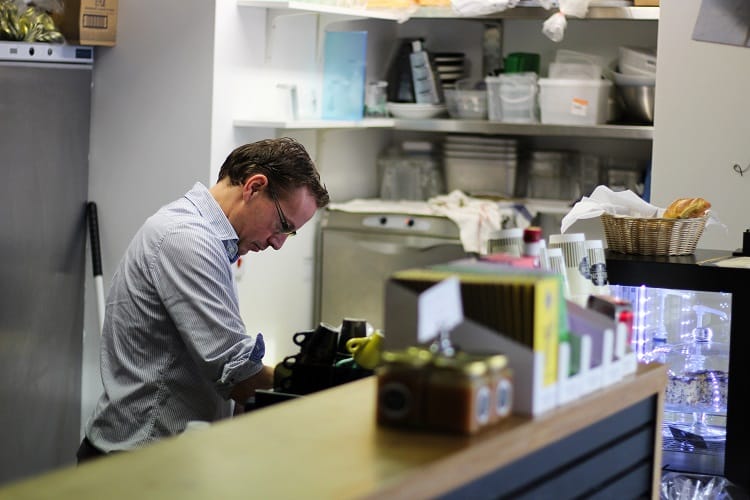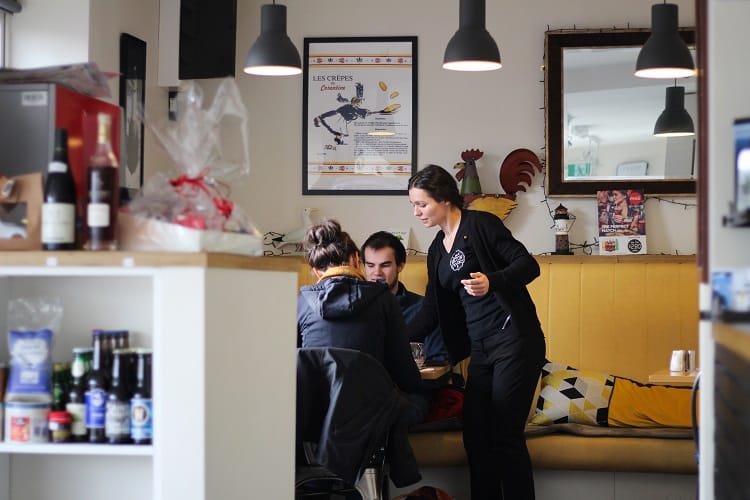New survey offers insights into levels of crime in Dublin city centre
The City Centre Crime Victim Survey was commissioned by Dublin Inquirer and carried out by Amarách Research.
“I remember as a child seeing my mother making them in a griddle inside the shop. Our flat was just above and it smelt so good,” says Gregory Autret.

It is the galettes that Gregory Autret specialises in.
Not the thin pancakes stuffed with sugar and chocolate, although he does those too. But the savory crêpes from Brittany in western France.
They’re made with buckwheat rather than white flour, he says on a recent Friday behind the counter in the small open kitchen of his restaurant Le Petit Breton on the junction of Drumcondra Road Lower and Whitworth Road.
It is the only restaurant of this kind, with real buckwheat galettes, in the capital since Fafies closed in 2012.
“Buckwheat is not a cereal as the name can suggest. It is a herb from the same family as the rhubarb plant,” says Autret. “This is why this is a gluten-free product compared to the crêpes.”
The liquid gray dough is a mix of this flour, eggs and water. “I add milk because this is how we do in my area. It gives a softer taste. Every recipe differs from where you are in Brittany,” he says.
The 36-year-old Frenchman was born and raised in the port of Brest based in the very west of Brittany. “In the east of the region, some cooks put only water,” he says.

The process is quick. Preparation takes less than five minutes. Galettes need to be served fresh.
On a recent Friday lunchtime, one of the two cooks, Ionela Godeanu, puts the dough on a cast-iron griddle with a ladle and makes sure that it forms a thin disc.
She uses the spatula to prevent it from sticking and adds the ingredients one by one: Emmental Swiss cheese – which is used a lot in French cuisine – bacon, crème fraîche, Guérande salt and mushrooms. You can add anything savoury, but the “classic” galette is made with ham, Emmental and an egg.
“I knew savoury white flour crêpes, but I had never heard of the buckwheat ones before joining the team one year and a half ago,” the Romanian cook says.
When the galette is done, Godeanu folds it twice and puts it on a plate. The galette now looks crunchy, ready to eat.
On the menu, Autret suggests his family recipe, “Tinduff”, named after the village where he grew up.
It is cooked with beaten eggs, bacon, French Emmental cheese and French sour cream. “My mother always used to cook at home and she prepares galettes that way,” he says.
His retired mother used to work in a convenience store close to the Brest dockyard, where she would sell home-made galettes and crêpes every day to upper-class customers and sailors’ wives.
“I remember as a child seeing my mother making them in a griddle inside the shop. Our flat was just above and it smelt so good,” he said.
In Brittany, galettes have been a staple for centuries, especially in the countryside where his mother spent her childhood.
Near the entrance to the restaurant, there is a copy of The Book of Crêpes.
Buckwheat flour was native to East Asia and appeared in Europe during the Crusades in the twelfth century, it says. The Duchess Anne of Brittany decided to introduce it to her duchy during the fifteenth century.
The soil was poor and difficult for farmers to exploit, but buckwheat flourished. “The seeds need only three months to grow, and galettes are really nutritious. Breton people, who were a poor population, ate it plain. It is only when they became wealthier that they began to add food in it,” he says.
Sixty percent of the flour Autret buys is made from buckwheat, and 40 percent is white flour. “Every four months, we order five hundred kilograms of flour from a Breton mill,” says the second cook, Miguel Bengoa.
Early Friday afternoon, people stop off for French coffees, home-made croissants or sweet crêpes. But, also, for galettes.

Bengoa, a 22 year-old Frenchman, has worked here from the beginning, since November 2015. “I was thinking that Dubliners would only get sweet ones, but I think people come here to try something different. You can get Nutella crêpes everywhere,” he says.
Autret settled in Ireland eight years ago. While he was still working at Google in sales and financial services, he spent a week perfecting how to make crêpes and galettes in Brest, readying himself to open his own restaurant.
Among the five people he was learning with, one of them was from Brazil and lived in Dublin as well. “When he said he wanted to open a crêperie in the city, I was taken by surprise,” Autret said.
His Brazilian crêpe buddy never opened it, but he eventually worked for them at Le Petit Breton from time to time when needed.
Autret is currently looking for a new place to open a second restaurant. It took him a year the first time to find something, he said.
So by the end of next year, he hopes, he’ll have a sister restaurant.